CV loop nonpulsatile model ported from Rideout (ACSL program PF-NP). Also in MATLAB.
Further reading: Rideout's section 4.6, pages 117-125.
Description
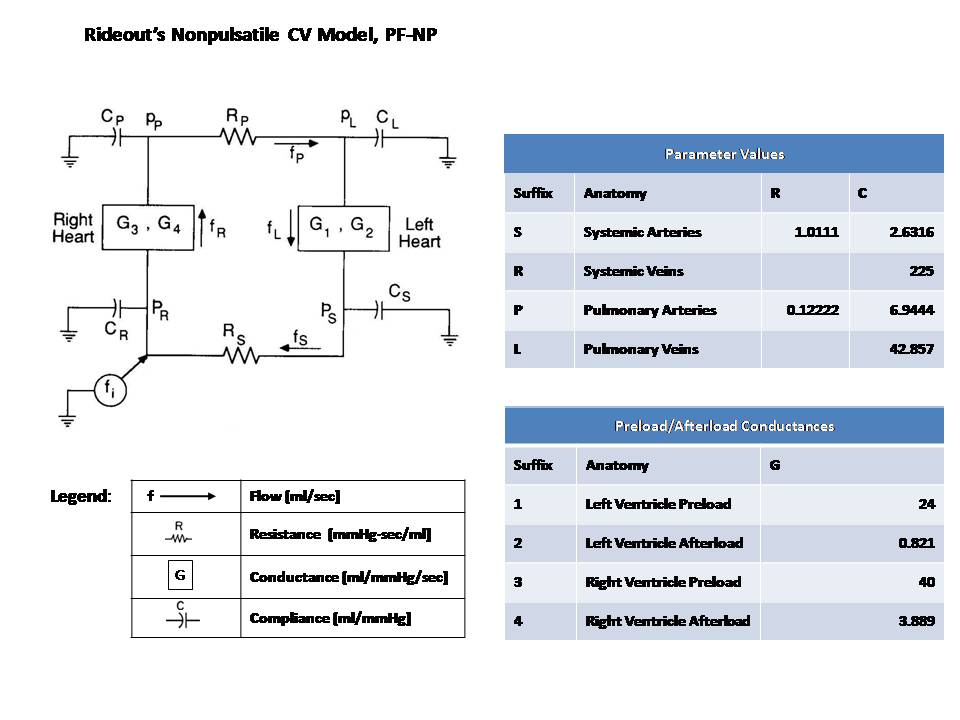
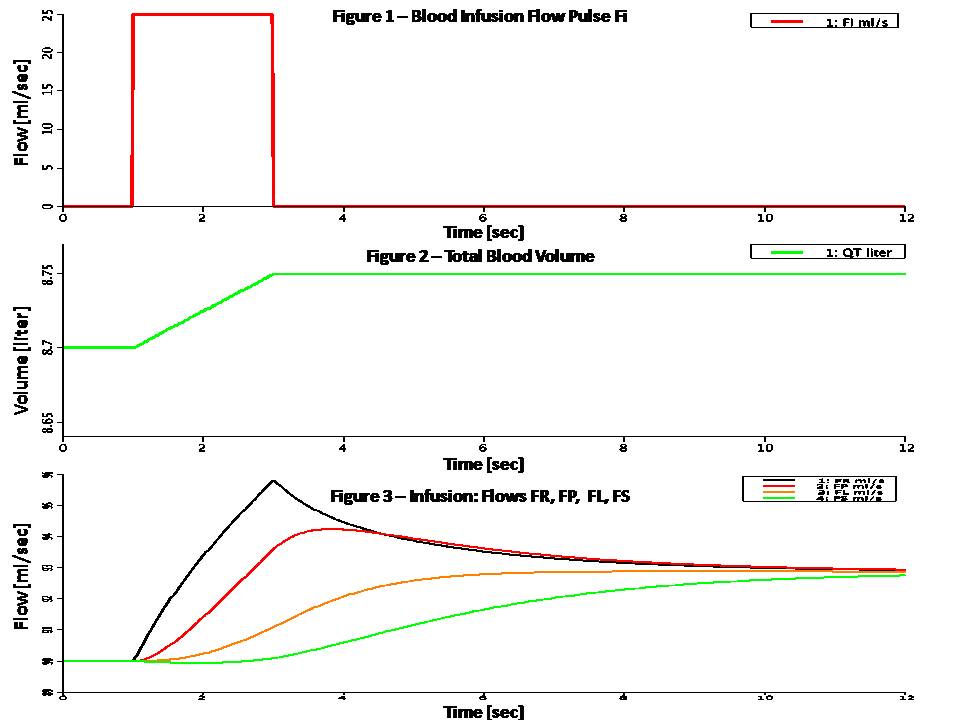
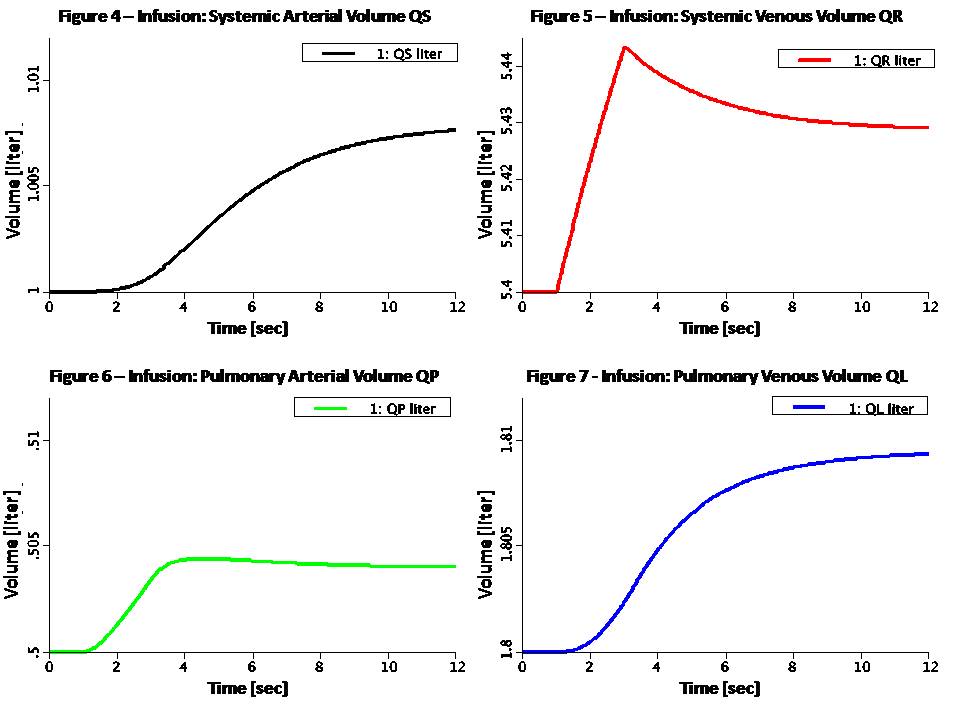
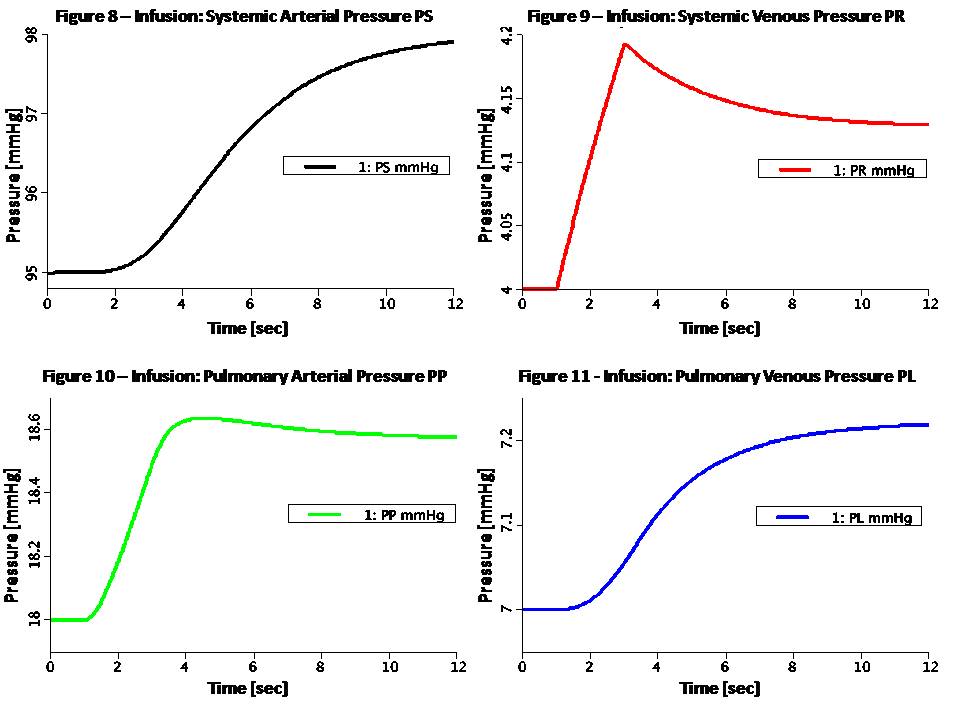
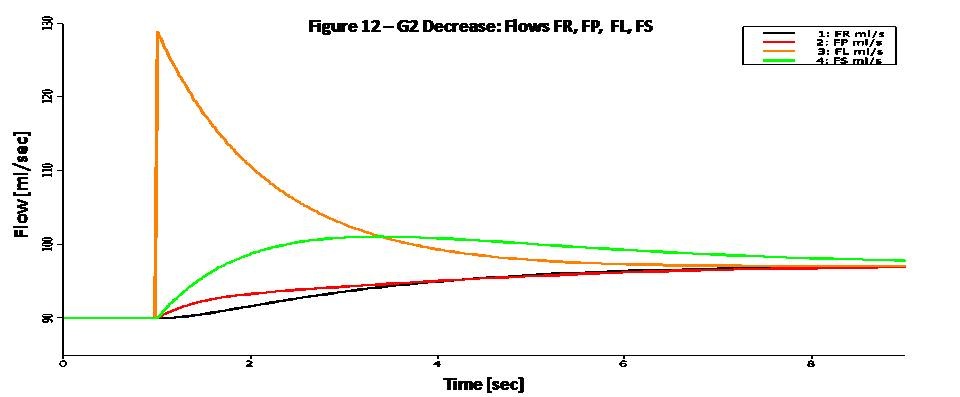
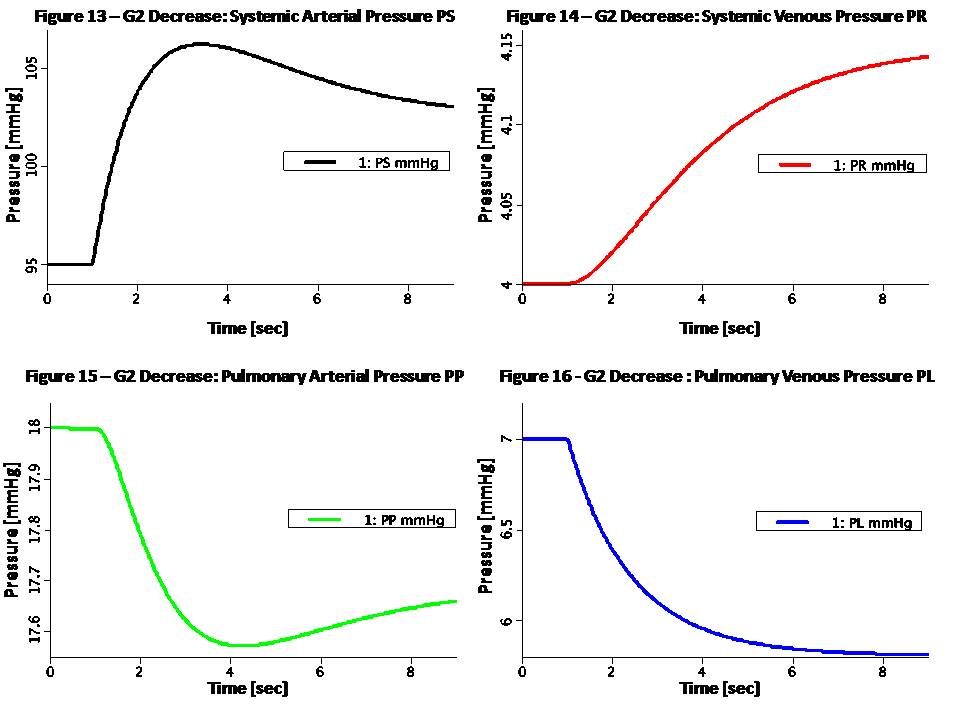
Nonpulsatile models are useful for pharmacokinetic studies which typically have time constants in minutes. Ignoring nonlinearities, the ventricular pressure-volume locus is counterclockwise between two straight lines whose slopes are SD=1/CD and SS=1/CS. CD and CS are the diastolic and maximum systolic compliances of the myocardium. If we denote the end-diastolic pressure PED and end-systolic pressure PES, then the stroke volume for the ventricle is: QSV = PED * CD - PES * CS Multiplying by the heart rate H, gives the average outflow: F = (CD * H) * PED - (CS * H) * PES Assuming a direct relationship between average atrial (Pat) pressure and PED, and between average arterial (Part) pressure and PES, we get: F = Gpre * Pat - Gafter * Part Where Gpre and Gafter are the preload (prior to contraction) and afterload (during ejection) conductances, and are inversely proportional to the diastolic and systolic stiffness, respectively. Denoting the left ventricle conductances G1 and G2, and the right ventricle conductances G3 and G4, the following equations describe the nonpulsatile ventricular flow: FL = G1 * PL - G2 * PS FR = G3 * PR - G4 * PP (Eqs. 1) The pressure drops over the systemic and pulmonary peripheral resistances are given by Ohm's law: PS - PR = RS * FS PP - PL = RP * FP (Eqs. 2) Assuming fixed compliances and unstressed volume (under zero pressure) for each of the four components: PS = (QS - QSU) / CS PR = (QR - QRU) / CR PP = (QP - QPU) / CP PL = (QL - QLU) / CL (Eqs. 3) Finally, integrating the flow through each component give the volume. QS:t = FL - FS QR:t = FS - FR + FI QP:t = FR - FP QL:t = FP - FL (Eqs. 4) Since this is a nonpulsatile model, the steady state is a unified constant flow through the loop. It is interesting to model a sudden change and the system response until a new steady state is obtained. Two such conditions are modeled with a JSim choice variable: (1) Infusion: Infusion flow pulse FI is added to systemic arteries (2) Left Ventricular Stiffness Change: G2 is halved at time TCH In infusion mode, a flow pulse FI is added to the systemic arteries flow (second equation in Eqs. 4). The infusion pulse is rectangular, starting at time TSTT = 1 sec and lasting WID = 2 seconds. In this mode all conductances are fixed. In Left Ventricular Stiffness Change mode, there is no infusion and total blood volume is constant. Left ventricular afterload conductance G2 is halved (left systolic stiffness is doubled) at TCH = 1 sec. Figure 1 shows the flow pulse FI in infusion mode. Figure 2 shows an increase of 50 ml in total blood volume (integral of flow). Figure 3 shows the flows FR, FP, FL and FS in infusion mode. Figures 4 through 11 show the corresponding volumes and pressures. Figure 12 shows the flows FR, FP, FL and FS in Left Ventricular Stiffness Change mode. Figures 13 through 16 show the corresponding pressures. The increase in systolic stiffness results in increased PS and QS (as evident from Eqs. 3). PR and QR also increase, but somewhat more slowly. As a result of these increases, the variables PP, QP, PL, and QL decrease (total blood volume must remain constant). All flows settle to the same increased value because of the stronger left heart.
Equations
The equations for this model may be viewed by running the JSim model applet and clicking on the Source tab at the bottom left of JSim's Run Time graphical user interface. The equations are written in JSim's Mathematical Modeling Language (MML). See the Introduction to MML and the MML Reference Manual. Additional documentation for MML can be found by using the search option at the Physiome home page.
- Download JSim model MML code (text):
- Download translated SBML version of model (if available):
Download MATLAB model M-file
We welcome comments and feedback for this model. Please use the button below to send comments:
Rideout VC. Mathematical computer modeling of physiological systems. Prentice Hall, Englewood Cliffs, NJ, 1991, Section 4.6, pp. 117-125 Rideout VC. Linear analysis of the cardiovascular system. Ch. 11, pp. 156-157
Please cite https://www.imagwiki.nibib.nih.gov/physiome in any publication for which this software is used and send one reprint to the address given below:
The National Simulation Resource, Director J. B. Bassingthwaighte, Department of Bioengineering, University of Washington, Seattle WA 98195-5061.
Model development and archiving support at https://www.imagwiki.nibib.nih.gov/physiome provided by the following grants: NIH U01HL122199 Analyzing the Cardiac Power Grid, 09/15/2015 - 05/31/2020, NIH/NIBIB BE08407 Software Integration, JSim and SBW 6/1/09-5/31/13; NIH/NHLBI T15 HL88516-01 Modeling for Heart, Lung and Blood: From Cell to Organ, 4/1/07-3/31/11; NSF BES-0506477 Adaptive Multi-Scale Model Simulation, 8/15/05-7/31/08; NIH/NHLBI R01 HL073598 Core 3: 3D Imaging and Computer Modeling of the Respiratory Tract, 9/1/04-8/31/09; as well as prior support from NIH/NCRR P41 RR01243 Simulation Resource in Circulatory Mass Transport and Exchange, 12/1/1980-11/30/01 and NIH/NIBIB R01 EB001973 JSim: A Simulation Analysis Platform, 3/1/02-2/28/07.

